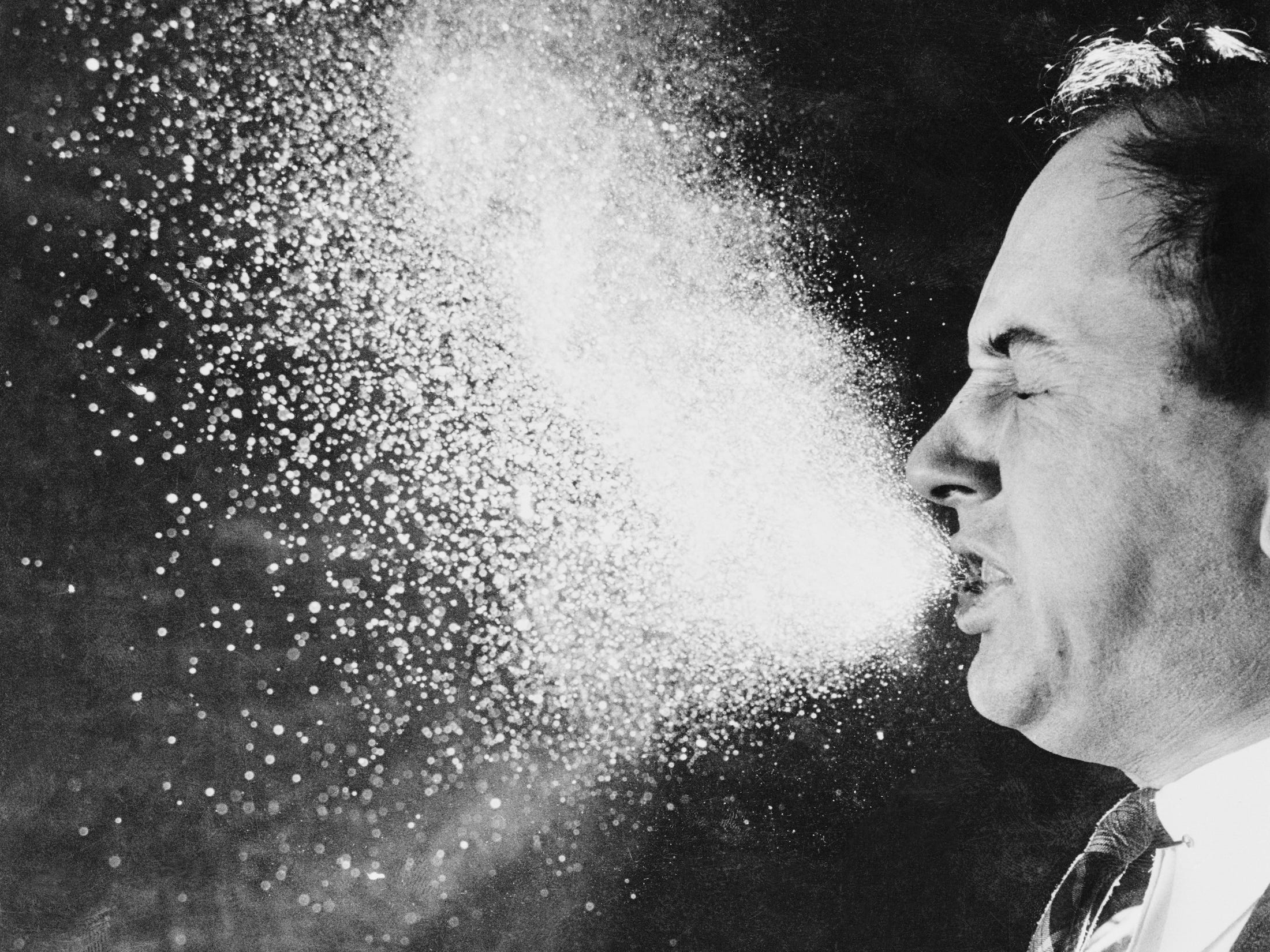
Bettmann/Getty Images
- The CDC on Friday acknowledged, for the first time, that the coronavirus can ‘remain suspended in the air.’
- The new CDC guidance was swiftly retracted late Monday morning, with the agency saying that “a draft version” had been “posted in error.” This has happened several other times in recent months, as the White House takes issue with the agency’s evidence-based recommendations.
- The new phrasing that CDC had issued lined up with what studies from around the world have suggested: the virus spreads easily between people through the air, even when they’re not snuggled closely together.
- Being loud, by singing, shouting, talking, and spitting, can all help the virus spread better.
- Visit Business Insider’s homepage for more stories.
Six feet may not be enough to protect you from the coronavirus, especially indoors.
The Centers for Disease Control and Prevention is now walking back new guidance, posted on its website Friday, helping to explain this idea.
The agency had acknowledged, for the first time, that the coronavirus “can remain suspended in the air and be breathed in by others, and travel distances beyond six feet.”
But the updated language was swiftly pulled off the federal agency’s website on Monday, even though it is backed by a large and growing body of evidence: the coronavirus spreads well between people who are indoors, shouting, singing, karaoke-ing, eating, and breathing together, even at a distance.
Reached by email on Monday, a CDC spokesperson told Insider that a “draft version” of the new guidance had been “posted in error to the agency’s official website,” and that the official recommendations are still being updated.
But the guidance the CDC had laid out was nothing revolutionary, merely clarifying what many other scientists and public health experts have said in recent months.
People, and the tiny particles that they breathe, shout, sing, sneeze, and cough out are the greatest viral threat right now. Not surfaces, and not contaminated groceries or mail.
As Americans head into the chillier fall and winter months, with the novel coronavirus still in circulation, it'll be an important point to remember: Being inside with this virus is dangerous, and wearing a mask when indoors is an important infection prevention technique.
The CDC's guidance may not be enough in every setting

CDC
Since the CDC last updated its guidance on how the virus spreads, in June, scientists have learned much more about the best ways that the coronavirus hops from person to person, as the illness has continued to move around the world.
In a now-infamous choir practice investigated in Washington state, 53 people got COVID-19, the illness caused by the coronavirus, from one sick choir member, even though they were all social distancing (but not wearing masks) during practice. Two people died.
In May, the CDC even issued "interim guidance for communities of faith" warning against group singing activities during the pandemic, but the guidance was yanked off the agency's website after only a day, because the White House hadn't approved the change.
In July, the World Health Organization, which like the CDC is constantly reviewing new scientific evidence about how the virus spreads, acknowledged that the virus may float beyond six feet, especially indoors.
The new guidance pressed that certain high-transmission indoor settings — "during choir practice, in restaurants, or in fitness classes" — have all shared some common features: they're crowded, poorly ventilated places where people have spent a "prolonged period of time" with infected individuals.
It's very similar to the CDC's updated information on 'How COVID-19 spreads.'
The CDC had said the virus 'can remain suspended in the air' and 'travel distances beyond 6 feet,' but the new recommendations have been yanked

CDC
Being outdoors with others is better than hanging out inside. There's infinite room for the virus to dissipate and disappear after leaving a sick person's nose or mouth, as long as you're not getting too close.
It also helps to have a good ventilation system, as many hospitals and airplanes already do. Or, open a window.
"If ventilation is good, it is not a threat, because the virus is not in the air," professor Lidia Morawska, a leading aerosol scientist in Australia, recently told Insider.
Wherever you are, keeping a good measure of distance between yourself and others is still a good idea, but if you're indoors, or in a crowded space, keeping your mask on, staying quiet, and making interactions brief can all help mitigate the spread.
"It's not rocket science to work out what needs to be done to minimize the risk of infection transmission," Morawska said.

